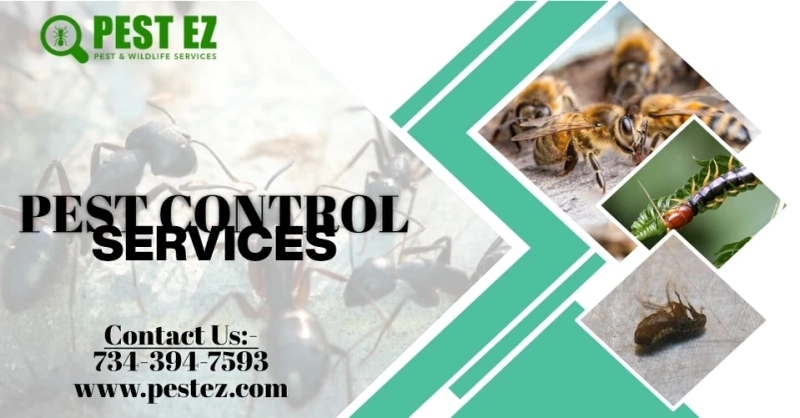Wasps behave differently and have different nests. For instance, mud daubers are usually docile and prey on other pests such as spiders. Identifying wasps species and their nests will help you effectively deal with them.
Yellowjacket.
Yellowjackets are considered to be the most aggressive species of wasps. You can find them throughout America and the rest of the world. They are often mistaken for bees because of their similar size, and yellow and black markings. If you see several of them in your yard, you may have to contact an Exterminator in Canton.
Yellowjackets form their nests in walls, crevices, and underground colonies. Their nests are made with a paper-like material and have a single hole. Yellowjacket wasps are social and highly territorial. Their nests can house thousands of members-approaching one requires extreme caution.
Hornets.
Hornets resemble yellowjackets, but they are larger and can grow to 2" and may have orange, red, or white markings. Like yellow jackets, they are very aggressive and territorial. They build their nests below and above the ground. Ohio's bald-faced hornets' nest can grow to the size of a basketball and are found above ground. There can be up to 700 hornets in one colony.
Mud daubers.
Mud daubers are generally docile and don't swarm like other wasps. They are black with bright yellow markings on their legs and thoraxes. Their long thin bodies make them stand apart from common types of wasps. Mud daubers build small tube-like structures with saliva and mud.
Paper wasps.
Paper wasps grow ¾" to 1" in length. Their bodies are brown with yellow or red markings and have black wings. Paper wasps form their nests with saliva and regurgitate plant or wood matter.
Their dangling, greyish nests have a honeycomb structure and are paper-like, hence their name. The nests commonly take the shape of an upside-down umbrella.
Cicada killer wasps.
Cicada killer wasps are some of the largest wasps in Canton, Ohio, and can be up to 1 ½ " in size. They appear black and have yellow markings with brown legs. They feed exclusively on dog-day cicadas.
Cicada killers are solitary creatures, and they build their wasps in the ground. There can be several Cicada killer pairs in one nesting site.
These wasps are not as aggressive as their name sounds. The male species don't have stingers, but they viciously defend their territory. Cicada killers are generally docile and only attack when provoked.
How do wasps get in my home?
Wasps are naturally drawn to flowers, fruits, food, and suitable shelter. A nest near your can cause some members to migrate to your home. Wasps will go through windows and other openings such as cracks in the walls or ceiling. For instance, if there's a nest on the tree beside an open window, wasps can get into your home. If they find a constant food source, chances are, they will build a new nest there.
Wasp seeking shelter to overwinter may also lodge in your attics, garages, or any other undisturbed location.
How to eliminate wasps at home.
Dealing with a wasp infestation without the aid of professionals requires caution and diligence. Before you approach a nest, you have to be fully protected. There are a few home remedies you can use for wasps. One of such is spraying their nest with soapy water to clog their breathing pores. Insecticides also do a good job of eliminating wasps. You must be at a considerable distance while you spray the nest.
Call professionals.
Sometimes, there are situations too difficult to handle on your own. Even when you are fully kit and approach a nest at dusk or night, there is no guarantee that you won't be swarmed and stung. We mentioned how yellow jacket nests contain thousands of members, and only a few dozen of active workers is enough to do damage. This could spell trouble, especially if you are allergic to a wasp sting.
Instead of risking injury and paying medical bills, call your Plymouth exterminator. Exterminators have the appropriate wasp removal tools for any situation. They will expertly identify, and eliminate wasps in your home. They will also help put measures in place to prevent future infestations.
0


